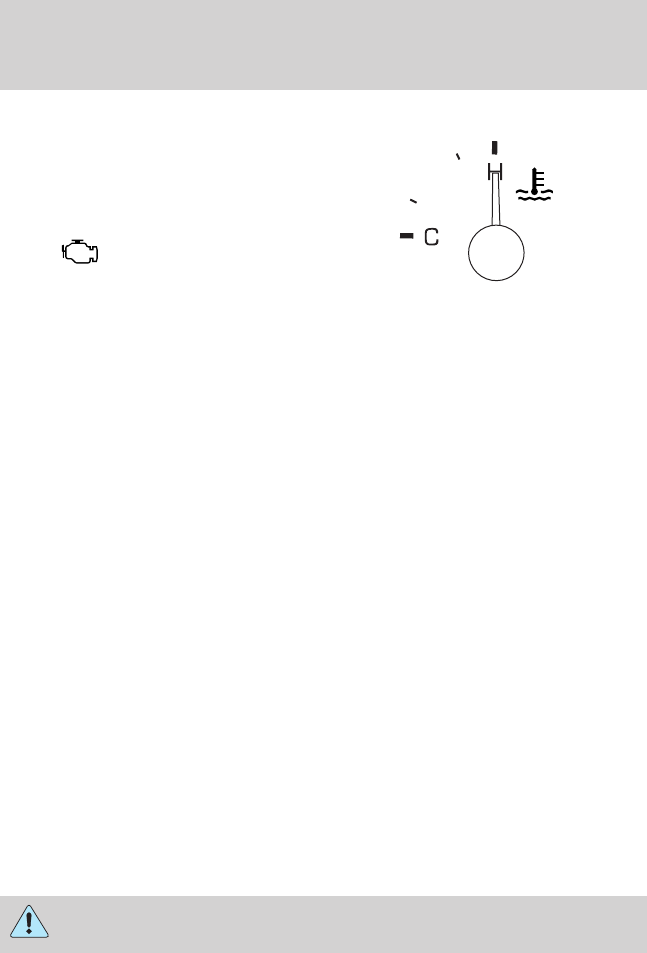Owner's Manual
Table Of Contents
- Table of Contents
- Introduction
- Instrument Cluster
- Entertainment Systems
- Climate Controls
- Lights
- Driver Controls
- MULTI-FUNCTION LEVER
- TILT STEERING WHEEL
- ILLUMINATED VISOR MIRROR (IF EQUIPPED)
- OVERHEAD CONSOLE (IF EQUIPPED)
- CENTER CONSOLE
- AUXILIARY POWER POINT (12VDC)
- POWER WINDOWS
- AUTOMATIC DIMMING REAR VIEW MIRROR (IF EQUIPPED)
- EXTERIOR MIRRORS
- SPEED CONTROL
- MOON ROOF (IF EQUIPPED)
- MESSAGE CENTER (IF EQUIPPED)
- LIFTGATE
- CARGO SHADE (IF EQUIPPED)
- LUGGAGE RACK (IF EQUIPPED)
- Locks and Security
- Seating and Safety Restraints
- FRONT SEATS
- REAR SEATS
- SAFETY RESTRAINTS
- Personal Safety System
- How does the Personal Safety System work?
- Driver and passenger dual-stage airbag supplemental restraints
- Front crash severity sensor
- Driver’s seat position sensor
- Front passenger sensing system
- Front safety belt usage sensors
- Front safety belt pretensioners
- Front safety belt energy management retractors
- Determining if the Personal Safety System is operational
- Safety restraints precautions
- Combination lap and shoulder belts
- Energy Management Feature
- Vehicle sensitive mode
- Automatic locking mode
- Safety belt height adjustment
- Safety belt pretensioner
- Safety belt extension assembly
- Safety belt maintenance
- Safety belt warning light and indicator chime
- BeltMinder
- Personal Safety System
- AIRBAG SUPPLEMENTAL RESTRAINT SYSTEM (SRS)
- Important SRS precautions
- Children and airbags
- How does the airbag supplemental restraint system work?
- Front passenger sensing system
- Determining if the system is operational
- Seat-mounted side airbag system (if equipped)
- Safety Canopy system (if equipped)
- Disposal of airbags and airbag equipped vehicles (including pretensioners)
- SAFETY RESTRAINTS FOR CHILDREN
- SAFETY SEATS FOR CHILDREN
- Tires, Wheels and Loading
- NOTICE TO UTILITY VEHICLE AND TRUCK OWNERS
- VEHICLE CHARACTERISTICS
- INFORMATION ABOUT UNIFORM TIRE QUALITY GRADING
- TIRES
- INFLATING YOUR TIRES
- TIRE CARE
- INFORMATION CONTAINED ON THE TIRE SIDEWALL
- TIRE PRESSURE MONITORING SYSTEM (TPMS)
- SNOW TIRES AND CHAINS
- VEHICLE LOADING – WITH AND WITHOUT A TRAILER
- TRAILER TOWING
- RECREATIONAL TOWING
- Driving
- STARTING
- ENGINE BLOCK HEATER (IF EQUIPPED)
- BRAKES
- STEERING
- PREPARING TO DRIVE
- AUTOMATIC TRANSMISSION OPERATION
- REVERSE SENSING SYSTEM (IF EQUIPPED)
- FOUR WHEEL DRIVE (4WD) SYSTEM (IF EQUIPPED)
- DRIVING THROUGH WATER
- Roadside Emergencies
- Customer Assistance
- GETTING THE SERVICES YOU NEED
- IN CALIFORNIA (U.S. ONLY)
- THE BETTER BUSINESS BUREAU (BBB) AUTO LINE PROGRAM (U.S. ONLY)
- UTILIZING THE MEDIATION/ARBITRATION PROGRAM (CANADA ONLY)
- FORD EXTENDED SERVICE PLAN
- GETTING ASSISTANCE OUTSIDE THE U.S. AND CANADA
- ORDERING ADDITIONAL OWNER’S LITERATURE
- REPORTING SAFETY DEFECTS (U.S. ONLY)
- REPORTING SAFETY DEFECTS (CANADA ONLY)
- Cleaning
- Maintenance and Specifications
- SERVICE RECOMMENDATIONS
- PRECAUTIONS WHEN SERVICING YOUR VEHICLE
- OPENING THE HOOD
- IDENTIFYING COMPONENTS IN THE ENGINE COMPARTMENT
- WINDSHIELD WASHER FLUID
- CHANGING THE WIPER BLADES
- ENGINE OIL
- BATTERY
- ENGINE COOLANT
- FUEL FILTER
- WHAT YOU SHOULD KNOW ABOUT AUTOMOTIVE FUELS
- ESSENTIALS OF GOOD FUEL ECONOMY
- EMISSION CONTROL SYSTEM
- POWER STEERING FLUID
- BRAKE FLUID
- TRANSMISSION FLUID
- AIR FILTER
- MOTORCRAFT PART NUMBERS
- MAINTENANCE PRODUCT SPECIFICATIONS AND CAPACITIES
- ENGINE DATA
- IDENTIFYING YOUR VEHICLE
- TRANSMISSION/TRANSAXLE CODE DESIGNATIONS
- Accessories
- Index

How fail-safe cooling works
If the engine begins to overheat:
• The engine coolant temperature
gauge will move to the red (hot)
area.
• The
indicator light will
illuminate.
• HIGH ENGINE TEMPERATURE
will be displayed in the message center.
If the engine reaches a preset over-temperature condition, the engine
will automatically switch to alternating cylinder operation. Each disabled
cylinder acts as an air pump and cools the engine.
When this occurs the vehicle will still operate. However:
• The engine power will be limited.
• The air conditioning system will be disabled.
Continued operation will increase the engine temperature and the engine
will completely shut down, causing steering and braking effort to
increase.
Once the engine temperature cools, the engine can be re-started. Take
your vehicle to an authorized dealer as soon as possible to minimize
engine damage.
When fail-safe mode is activated
You have limited engine power when in the fail-safe mode, so drive the
vehicle with caution. The vehicle will not be able to maintain high-speed
operation and the engine will run rough. Remember that the engine is
capable of completely shutting down automatically to prevent engine
damage, therefore:
1. Pull off the road as soon as safely possible and turn off the engine.
2. Arrange for the vehicle to be taken to an authorized dealer.
3. If this is not possible, wait a short period for the engine to cool.
4. Check the coolant level and replenish if low.
Never remove the coolant reservoir cap while the engine is
running or hot.
5. Re-start the engine and take your vehicle to an authorized dealer.
2007 Mariner (mrn)
Owners Guide (post-2002-fmt)
USA (fus)
Maintenance and Specifications
246










